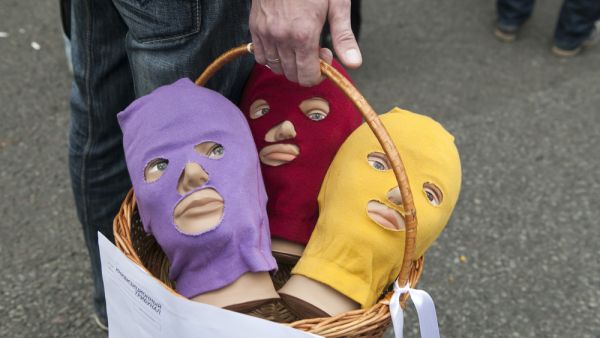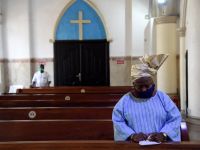Milo Rau’s “The Moscow Trials” is part documentary, part theatrical experiment. It depicts a three-day mock show-trial held at Moscow’s Sakharov Center in March, 2013.
The theater-documentary project revisited Russia’s raging and long-standing culture war between those who see contemporary art as a platform for progressive political activism, and those who dismiss it as offensive hooliganism that desecrates religious values.
“Trials” was projected in the framework of Zoukak Sidewalks.
Staged by Zoukak Theatre Company, the event is described as a point of encounter, presenting international and local performances and artistic events, and providing a platform for artistic exchange as well as a space for intercultural reflection.
Rau was a featured artist at this year’s event, participating in a master class, theater performance and public talks as well as projecting two of his films the first being the 2017 doc “The Congo Tribunal.”
“Trials” documents a theatrical restaging of trials of artists who’d staged three separate art installations in Russia between 2003 and 2013, all of which were summarily convicted. While the show-trial Rau documents was a theatrical recreation, the judge was real as were the artists, politicians, church leaders and lawyers who participated.
Six Moscow residents made up the jury, all of different backgrounds and political and religious beliefs.
The project tried its three cases “Caution! Religion,” “Forbidden Art,” and Pussy Riot’s performance at Moscow’s Cathedral of Christ the Savior over three days.
Religious symbolism was a prominent theme in both “Caution! Religion!” and “Forbidden Art,” both staged in 2003, and both artists were charged with offending the Orthodox Church.
After their 2013 performance, Pussy Riot were charged with hooliganism and religious hatred putatively because of the religious significance of their performance venue.
Taking the form of political theater, “Trials” retraces the steps of the story of a state and church-driven campaign against inconvenient artists, using these three performances as a platform of discussion.
The core of Rau’s film rests on the cases proposed by the prosecution and defense. The prosecution represented Russian Orthodox Christianity and the righteous indignation it felt at the prospect of an attack from Western liberal values.
For its part, the defense argued that these artists’ contentious work wasn’t a critique of religion itself but of the creeping theocracy apparent in Russian society.
The power of the documentary comes not from the defense or prosecution arguments, but rather from the severity with which all participants (regardless of ideology) respected the trial, despite its fictional nature.
This point is exemplified during a free and fluid discussion of the nature of the relationship between church and state, which compelled Russian immigration officials (real ones) to interrupt the trial in an effort to stifle the proceedings.
One of Pussy Riot’s members referred to the intrusion as “Russia’s participation” in the theater piece.
“Those who were rivals on the stage, now ally against the agents of the state,” Rau tells news cameras during the film. “It’s an excuse to interrupt us, but it won’t work.”
The director does an excellent job in reminding the audience transparent and legitimate court proceedings have been absent from Russia’s recent history, especially in the case of trials of artists and dissidents.
While this mock trial dealt directly with artistic expression, it pushes further to pose questions about freedom of expression as a whole.
What limits free expression and who decides what those limits are?
“The Moscow Trials” is an excellent distillation of a matter that is hardly unique to Russia.
The film is a testament to the power of open and transparent spaces for discussion, in which people of opposing views are able to engage with one another in a meaningful and respectful way.
This article has been adapted from its original source.








